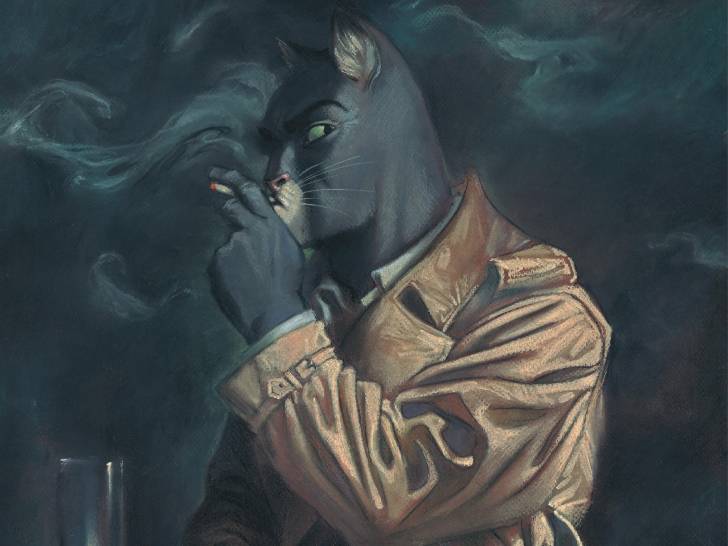

Intertextual Tensions: Blacksad as Liminal Noir Text This article will explore the ways in which Blacksad is a noir text through its constant blending and intertextuality, and then discuss how music in the comic augments these tensions.

In doing so, it reveals the inherent tensions and ambiguous combinations in both comics and noir, namely the dichotomy between silence and music. While music in comics is not new, the music in Blacksad is unique because it recalls and perpetuates the music tradition in noir. However, an often-overlooked aspect of the comic, and an overlooked noir trope, is the music. This is evident in the French album format of the comic in which each comic is around 60 pages. From the outset, Blacksad blatantly evokes the noir tradition, namely through the transatlantic blending of styles and intertextuality. The positioning of the figures on the cover, as well as the low-key lighting that accentuates the contour of the woman’s face, emulates posters advertising 1940s and 1950s American films and the overall noir style. The album cover features Blacksad in a suit and trench coat aiming a gun at an unseen foe while his femme fatale, Natalia, grips his chest and looks coolly over her shoulder. It becomes clear from the first cover of Blacksad: Somewhere within the Shadows that the comics use noir stylistic devices and archetypes. Juan Díaz Canales and Juanjo Guarnido’s Blacksad follows Private Investigator John Blacksad, an anthropomorphic cat who is hired to solve various cases including murders and child abductions while combatting racist factions and atomic bomb threats.


 0 kommentar(er)
0 kommentar(er)
